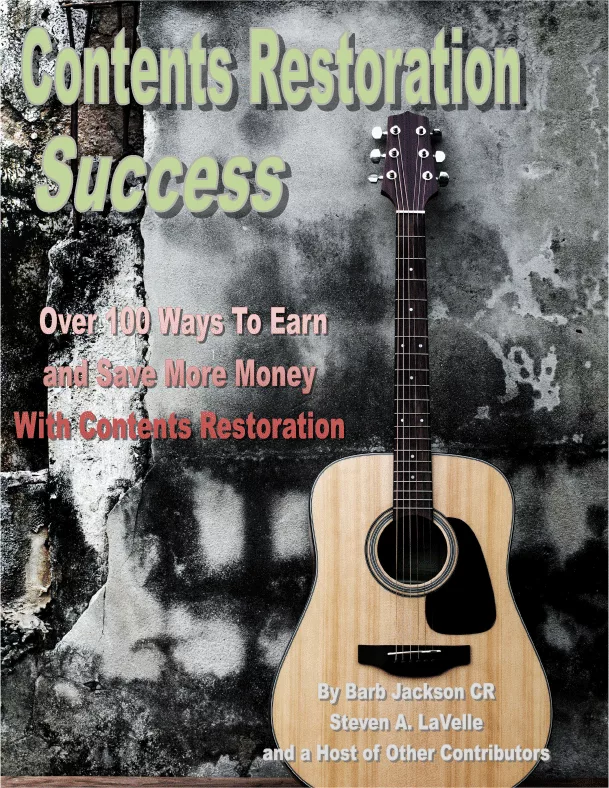Hoarding: Not Your Typical Restoration Job
It is estimated that 1.2 million people in the U.S. suffer from compulsive hoarding. These cases create business opportunities for remediation professionals, but they also pose unique health and safety hazards for the property owner and the contractor hired to restore the property. For the safety of the client and your employees, it is important to understand how and why every hoarding case should be treated as a biohazard. Before committing to any hoarding job, a restoration company must provide the proper biohazard training and equipment for employees or choose to form a partnership with professionals who specialize in this type of bioremediation.
Dealing with the Emotion
While flood or fire damage emergencies certainly need to be handled with care, hoarding cases can be especially emotionally trying. Employees must be educated about the basic psychology behind hoarding so they understand how to work appropriately with clients. Those who suffer from compulsive hoarding often have extreme emotional attachment to items that many people would find of no value. Before any waste removal or cleanup begins, the remediation professionals must work closely with the property owner or family members to understand where effort should be made to salvage belongings.
Throughout these sensitive situations, it is imperative that the workers in a client’s home are compassionate and considerate. Biohazard cleanup specialists understand the need for the family to deal with only one point person in order to avoid confusion or conflicting updates. They have been trained to understand what hoarding is so they don’t pass judgment and are able to speak empathetically with all who are impacted by the hoarding case.
Protecting Your Employees
According to the Anxiety and Depression Association of America, approximately 40 percent of object hoarders also hoard animals and more than 80 percent of animal hoarders have diseased, dying or dead animals on the premises. Dealing with the cleanup of animal waste, including fecal matter and urine, can be just as dangerous as cleaning up infected blood. If technicians are not properly equipped or trained to handle biomaterials, the bacteria transmitted through animal waste can cause infections and respiratory complications.
When working to remove piles of clothes, newspapers, boxes, food, junk mail or memorabilia from a client’s home, technicians may be exposed to live human or animal waste, hypodermic needles, broken glass or black mold. Given the potentially hazardous working conditions, employers must provide employee training that meets OSHA’s Bloodborne Pathogen Standard. Level 3 personal protective equipment (PPE) including gloves, booties and biohazard suits must be worn during the entire remediation process. Employees also need to be trained in the use of a respirator, which must be worn at all times when exposed to potentially airborne biohazards.
Don’t Just Clean - Sanitize
Companies that do not specialize in biohazard remediation often lack the proper training and equipment to thoroughly sanitize a property after a hoarding case. Even after contaminated materials have been removed from the premises, health hazards still remain. Here are a few critical steps in the cleaning and sanitization process of a biohazard situation that remediation professionals must follow:
- Dispose of porous materials: It is strongly recommended to dispose of furniture, carpet, towels and other porous fabrics that cannot be remediated.
- Consider subflooring: In many hoarding cases, urine and fecal matter have built up on floors and walls over months or even years. As the biomaterial seeps through tiles and carpet, it will contaminate the subflooring, which must also be removed.
- Remove all visible debris: It is impossible to sanitize a surface if there is even a trace of liquids or solids on it - disinfecting a soiled surface will only sanitize the top layer of dirt.
- Use specialized cleaning agents: Not all cleaning agents are created equal; some are specially designed to fight bacteria and pathogens carried in blood and fecal matter. Also, employees must be trained on how to properly use and dilute certain agents to precise ratios in order for them to be effective.
- Be diligent: To properly sanitize a surface and restrict cross contamination, each towel should be used just once per side before properly disposing of it as biohazard waste. If you re-use the same towel on a larger area, you are simply spreading contaminants.
- Dispose properly: All biohazard materials should be placed in closable, leak-proof, labeled, color-coded containers prior to removal to prevent spills during handling, storage and transport. When transporting biohazard materials, EPA and DOT regulations must be closely followed in order to avoid hefty fines.
One of the best ways to truly measure the resulting level of sanitization is through ATP (adenosine triphosphate) testing. With this technology, technicians are able to test the affected areas to ensure that all potentially infectious materials have been effectively neutralized. The test works by using a hand-held device and swabbing the area to test for the presence of ATP molecules, which indicate cellular activity (all living organisms give off ATP as they use energy). Aftermath is the first biohazard company to integrate ATP testing into its remediation process after consulting with safety and sanitation experts in food processing and healthcare industries.
Choose the Right Partner
If a restoration company is not equipped to handle a hoarding case, it makes sense to work with a trusted partner who specializes in biohazard cleanup. These types of partnerships are mutually beneficial and allow both parties to better serve their clients.
Creating professional partnerships can also help to streamline the insurance process for policyholders. Working together with a complimentary company can help ease confusion and complications when submitting a claim, as the various jobs can be filed under one claim number. The most important aspect to keep in mind is always the person and family who are dealing with a hoarding situation. If your company is not fully trained for a hoarding job, it may be better to leave it to the biohazard remediation professionals.
Looking for a reprint of this article?
From high-res PDFs to custom plaques, order your copy today!







